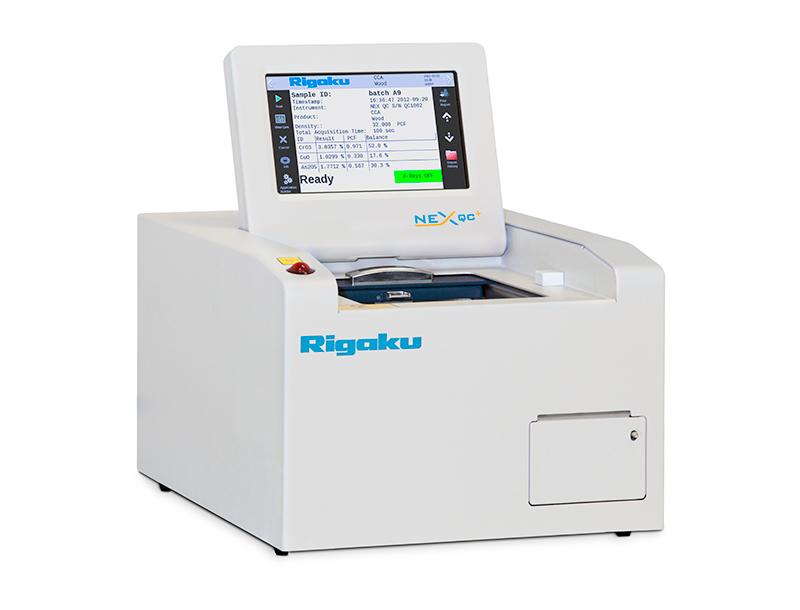Complex Lube Oils

Scope
The measurement of Mg, Si, P, S, Cl, Ca, Zn, Ba, and Mo in new lube oils is demonstrated using the empirical approach.
Background
Quality control and quality assurance during the lube oil blending and manufacturing process is essential. Basic lube oil formulations containing only P, S, Ca and Zn are often augmented with additional elements and additives to create lubricating oils for specific needs. A fast, simple method of analyzing lube oils is important throughout the QC/QA process. Rigaku meets this industry need with a high performance, low cost benchtop EDXRF system. Rugged and reliable, the NEX QC+ is an ideal tool for elemental analysis, with simple and intuitive software for the non-technical operator.
 Model: NEX QC+
Model: NEX QC+
Calibration
To demonstrate a complex fresh lube oil formulation, empirical calibrations were built using a suite of 23 commercially available calibration standards. The suite of calibration standards must be representative of the lube oil formulation to be analyzed. Use of empirical calibration ensures the particular lube oil formulation is exactly characterized and modeled, which yields optimum accuracy. Elements in the lube oil should span over each concentration range of interest, and the elements in the oil should vary independently of each other. Alpha corrections are then employed to automatically compensate for variations in X-ray absorption and enhancement effects within the sample due to the independent variations in element concentration. A summary of the empirical calibrations is shown here.
| Element | Concentration range |
| Mg | 0.020 – 0.080 % |
| Si | 0.010 – 0.045 % |
| P | 0.002 – 0.250 % |
| S | 0.050 – 2.500 % |
| Cl | 0.001 – 0.200 % |
| Ca | 0.001 – 0.500 % |
| Ba | 0.005 – 0.040 % |
| Zn | 0.001 – 0.250 % |
| Mo | 0.005 – 0.050 % |
Repeatability
Representative samples from the calibration were chosen to demonstrate typical instrument repeatability (precision). Ten repeat analyses of each sample were performed with the sample in static position.
| Sample: 7 Units: % |
||||
| Element | Standard value | Average value | Std. dev | % Relative dev |
| Mg | 0.025 | 0.0326 | 0.0017 | 6.8% |
| Si | 0.030 | 0.0348 | 0.0016 | 5.3% |
| P | 0.100 | 0.1007 | 0.0007 | 0.7% |
| S | 1.251 | 1.272 | 0.007 | 0.6% |
| Cl | 0 | --- | --- | --- |
| Ca | 0.350 | 0.3578 | 0.0015 | 0.4% |
| Ba | 0.010 | 0.0096 | 0.0003 | 3.0% |
| Zn | 0.001 | 0.0011 | 0.0001 | 10% |
| Mo | 0.015 | 0.0156 | 0.0001 | 0.7% |
| Sample: 9 Units: % |
||||
| Element | Standard value | Average value | Std. dev | % Relative dev |
| Mg | 0 | --- | --- | --- |
| Si | 0.021 | 0.0201 | 0.0013 | 6.2% |
| P | 0 | --- | --- | --- |
| S | 0.750 | 0.7479 | 0.0034 | 0.5% |
| Cl | 0.006 | 0.0053 | 0.0002 | 3.3% |
| Ca | 0.300 | 0.3055 | 0.0017 | 0.6% |
| Ba | 0.030 | 0.0305 | 0.0003 | 1.0% |
| Zn | 0 | --- | --- | --- |
| Mo | 0.050 | 0.0520 | 0.0005 | 1.0% |
| Sample: 21 Units: % |
||||
| Element | Standard value | Average value | Std. dev | % Relative dev |
| Mg | 0.060 | 0.0695 | 0.0035 | 5.8% |
| Si | 0 | --- | --- | --- |
| P | 0.250 | 0.2492 | 0.0041 | 1.6% |
| S | 2.500 | 2.514 | 0.014 | 0.6% |
| Cl | 0.120 | 0.1181 | 0.0013 | 1.1% |
| Ca | 0.010 | 0.0120 | 0.0002 | 2.0% |
| Ba | 0 | --- | --- | --- |
| Zn | 0.050 | 0.0487 | 0.0002 | 0.4% |
| Mo | 0 | --- | --- | --- |
| Sample: 6 Units: % |
||||
| Element | Standard value | Average value | Std. dev | % Relative dev |
| Mg | 0 | --- | --- | --- |
| Si | 0 | --- | --- | --- |
| P | 0.010 | 0.0110 | 0.0003 | 3.0% |
| S | 0.250 | 0.246 | 0.001 | 0.4% |
| Cl | 0.180 | 0.1834 | 0.0018 | 1.0% |
| Ca | 0.001 | 0.0019 | 0.0001 | 10% |
| Ba | 0.003 | 0.0031 | 0.0001 | 3.3% |
| Zn | 0.225 | 0.2198 | 0.0006 | 0.3% |
| Mo | 0.003 | 0.0030 | 0.0001 | 3.3% |
Conclusion
The NEX QC+ offers analysts and technicians a simple yet powerful and versatile system for quantifying elemental composition of new, fresh lube oils using the empirical approach. The results of this study indicate that given stable samples, proper sample handling and proper calibration technique, the Rigaku NEX QC+ EDXRF can achieve excellent results measuring the elemental concentration of lubricating oils. The performance shown in this and other App Notes NEX QC and NEX QC+ can be used to comply with ASTM D6481 for the measurement of P, S, Ca and Zn.

Contact Us
Whether you're interested in getting a quote, want a demo, need technical support, or simply have a question, we're here to help.
